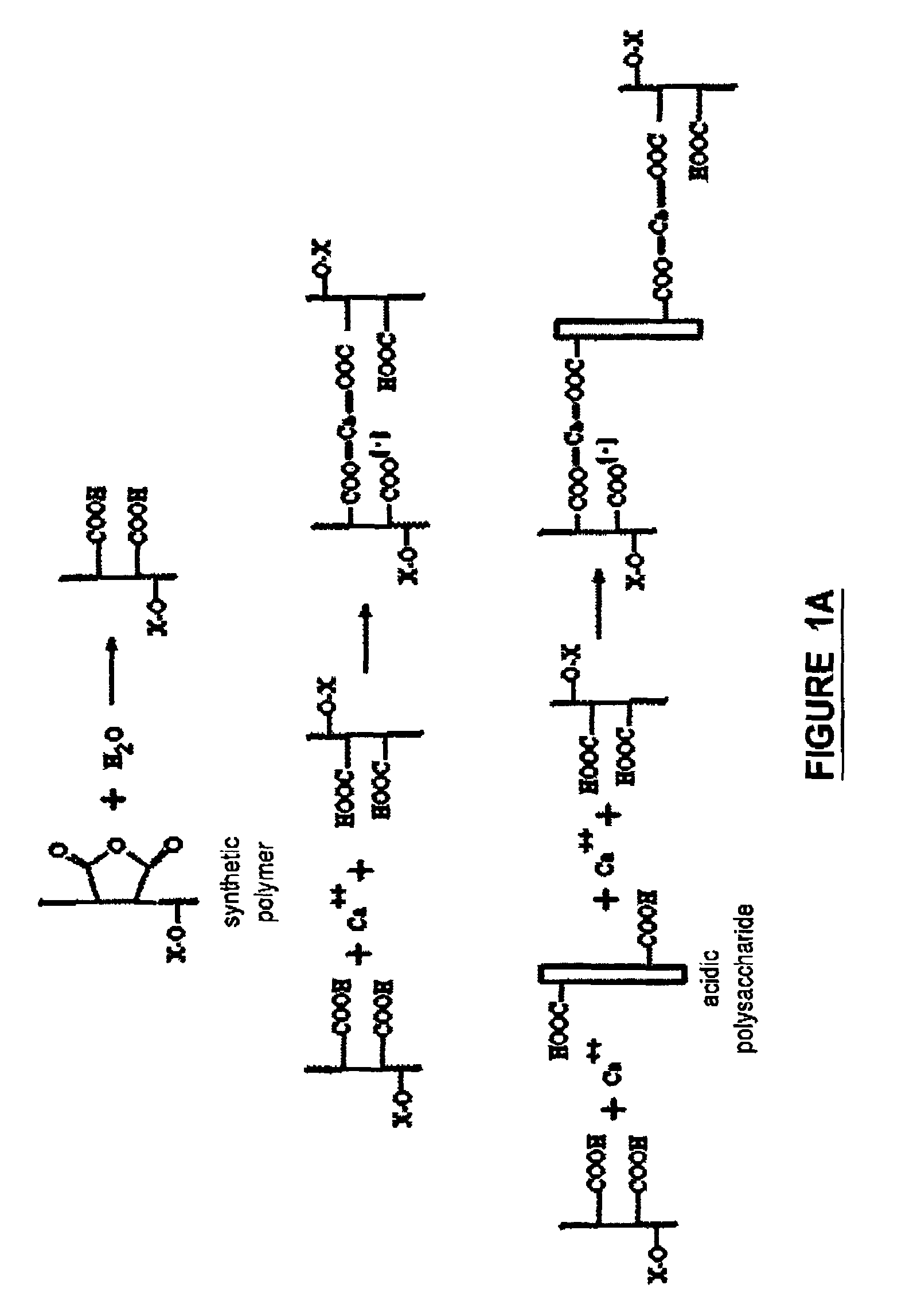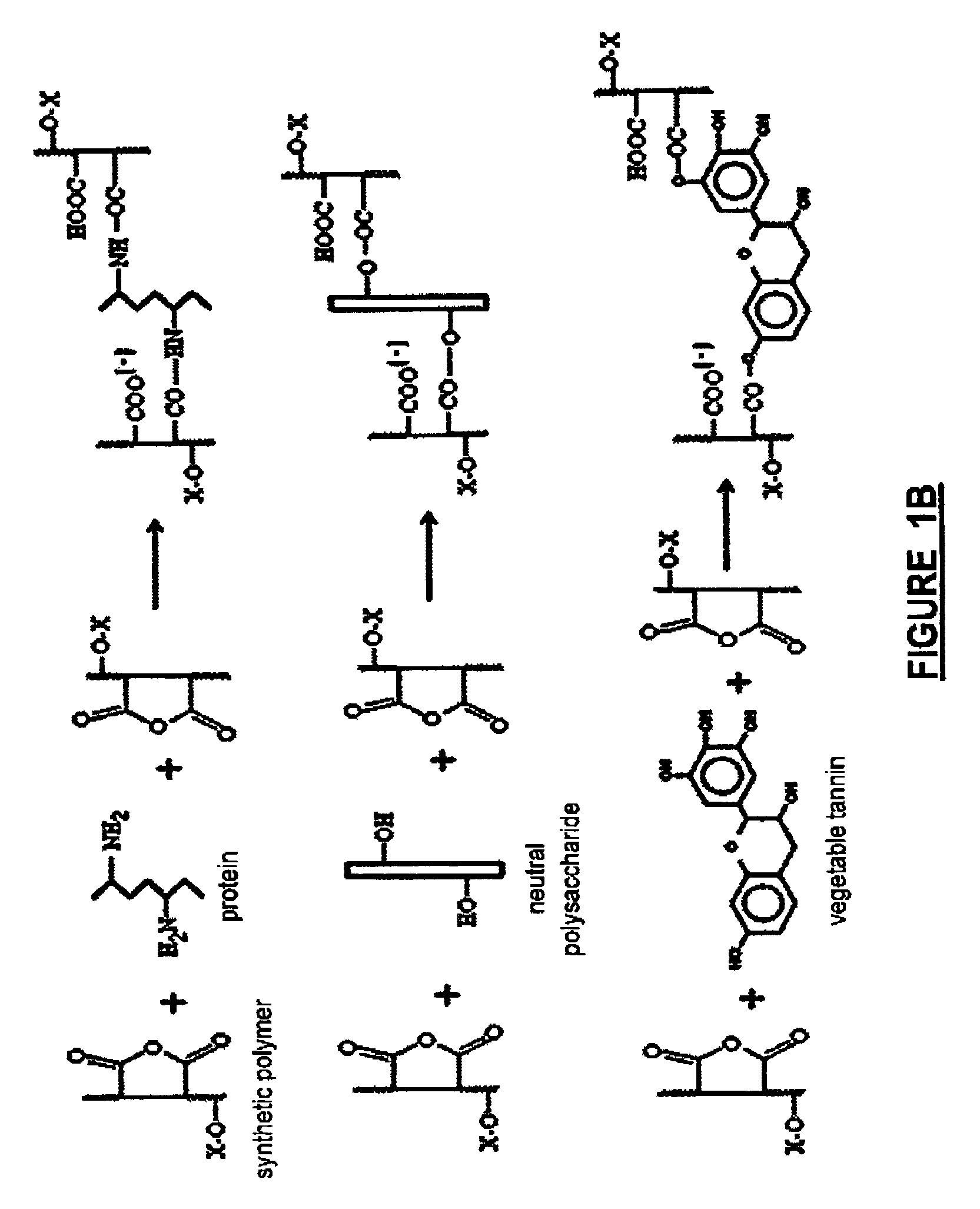Biodegradable fire-fighting formulation
a biodegradable, fire-fighting technology, applied in the direction of fire extinguishers, etc., can solve the problems of uncontrollable fires in forest fires occurring in combustible vegetation, particularly in the use of water, and unnecessary water damage, so as to extinguish the burning of vegetation
- Summary
- Abstract
- Description
- Claims
- Application Information
AI Technical Summary
Benefits of technology
Problems solved by technology
Method used
Image
Examples
example 1
Preparation of a Solid-Liquid Suspension
[0183]300 ml demineralized water and 160 g of synthetic polymer poly (methyl vinyl ether-co-maleic anhydride) with 200,000 Da average molecular mass, as white powder with specific gravity of 1.018 (GANTREZ AN 119™ from International Specialty Products (ISP)) were placed in a laboratory planetary mixer. After 15 minutes of mixing at room temperature, 150 g of ammonium hydroxide solution was added, and mixed for a further 60 minutes. 610 g of transparent, viscous solution, with a pH=6.85 was obtained.
[0184]200 ml of a solution comprising 6 g vegetable tannin Quebracho (UNITAN CROWN ATO, from UNITAN, Argentina) in demineralized water were placed in a laboratory blender with capacity of 1 Liter (KENNEDY Model KN-310), with 4 g of sulphated castor oil (Actrasol C75™, density 8.6 lb / gal, total Alkalinity 21 mg KOH / g, free fatty acid 4% and SO3 content 3.5%, from CLIMAX Corp.) in which was suspended 16 g guar gum (from SIGMA catalog number G4129-250G...
example 2
Preparation of Gel-Liquid Water Suspension by ‘Solid-Gel’ Method
[0186]250 ml demineralized water and 100 g synthetic polymer GANTREZ AN 119™ were placed in a laboratory blender with a capacity of 2 Liter, as for Example 1, and mixed at room temperature, at a speed of 200 rpm for 5 minutes, to obtain a homogenous suspension. To the suspension was added 50 ml gelatin solution (with Bloom index of 200 and IP=7.2 from SIGMA catalog no. 27, 161-6) of 16% by weight concentration, prepared by simple dissolution of the biopolymer in water at a temperature of 50° C. using a magnetic stirrer. After 20 minutes of homogenization, under slow mixing conditions, 100 ml of NaOH solution of 30% by weight concentration was added, and the stirrer speed increased to 800 rpm for a further 30 minutes at room temperature. 500 g of polymeric material with a pronounced gel character was obtained.
[0187]The polymeric material was then mixed with 150 g of flame retardant TexFRon AG™ and 8 g of sulphated castor...
example 3
Preparation of an Oil-in-Water Emulsion Comprising Gel Particles
[0190]A gel-liquid was first prepared as for Example 2, using a mixture of 10 g of alginate and 4 g of vegetable tannin (Quebracho) instead of gelatin, and 18 g of Na2CO3 instead of NaOH. 508 g of polymeric material in gel form with light brown-reddish color was obtained, to which was added in a blender 45 g of Canola oil and 8 g of sulfonated castor oil as surfactant, with mixing at room temperature for 30 minutes, at a speed of 1000 rpm. The resultant emulsion was transferred to a laboratory blender and mixed with 80 g of flame retardant. 640 g of emulsion with a viscosity of 9460 cps was obtained.
PUM
 Login to View More
Login to View More Abstract
Description
Claims
Application Information
 Login to View More
Login to View More - R&D
- Intellectual Property
- Life Sciences
- Materials
- Tech Scout
- Unparalleled Data Quality
- Higher Quality Content
- 60% Fewer Hallucinations
Browse by: Latest US Patents, China's latest patents, Technical Efficacy Thesaurus, Application Domain, Technology Topic, Popular Technical Reports.
© 2025 PatSnap. All rights reserved.Legal|Privacy policy|Modern Slavery Act Transparency Statement|Sitemap|About US| Contact US: help@patsnap.com



